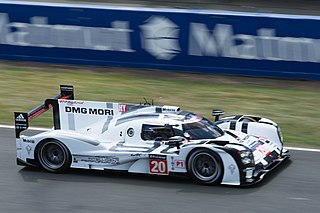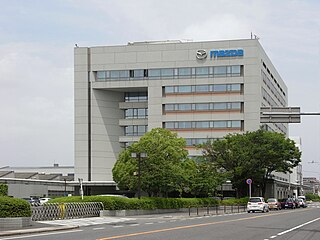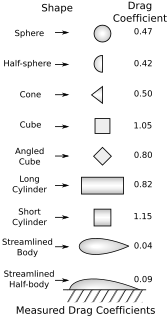
A solar vehicle is an electric vehicle powered completely or significantly by direct solar energy. Usually, photovoltaic (PV) cells contained in solar panels convert the sun's energy directly into electric energy. The term "solar vehicle" usually implies that solar energy is used to power all or part of a vehicle's propulsion. Solar power may be also used to provide power for communications or controls or other auxiliary functions.

Nuna is the name of a series of manned solar powered race cars that have won the World Solar Challenge in Australia seven times: in 2001, 2003, 2005, 2007, 2013, 2015 and 2017. The vehicles are built by students who are part of the "Nuon Solar Team" at the Delft University of Technology in the Netherlands, sponsored by N.V. Nuon Energy.

The University of Calgary Solar Car Team is a multi-disciplinary student-run solar car racing ("raycing") team at the University of Calgary, based in Calgary, Alberta, Canada. It was established to design and build a solar car to compete in the American Solar Challenge (ASC) and the World Solar Challenge (WSC). The team is primarily composed of undergraduate students studying Engineering, Business, Science, Arts and Kinesiology. The mission of the University of Calgary Solar Car Team is to educate the community about sustainable energy and to serve as an interdisciplinary project through which students and faculty from various departments can collaborate in supporting sustainable energy.
The 1995 24 Hours of Le Mans was the 63rd Grand Prix of Endurance, and took place on 17 and 18 June 1995 in one of the wettest races in the event's history with about 17 hours of steady rain. The race was won by the #59 McLaren F1 GTR driven by JJ Lehto, Yannick Dalmas and Masanori Sekiya entered in the GT1 category. This was the first Le Mans win for a driver from Finland and for a driver from Japan. It was also McLaren's first win, at its first attempt. Such was the marque's dominance that its cars filled four of the first five places - Ferrari did it with its two cars in 1949, but other manufacturers like Jaguar, Porsche, Ford or Audi achieved their Le Mans fame only after 2, 3 or more years attempting their first win.

The UNSW Solar Racing Team is the solar car racing team of the University of New South Wales in Sydney, Australia. The team currently holds a number of world records and is best known for its participation in the World Solar Challenge (WSC). Since its founding in 1996 by Byron Kennedy, the Sunswift team has built a total of 6 different cars, the most recent of which is Sunswift VI.

The University of Minnesota Solar Vehicle Project, or UMNSVP, is a team of undergraduate students from the University of Minnesota that designs and constructs solar-powered cars. In its 28 years, it has established itself as one of the world's top solar racing teams, and the top Cruiser/MOV team in the Western Hemisphere, with top-two finishes in eighteen of thirty-three events entered.

The Sunraycer was a solar powered race car designed to compete in the world's first race featuring solar-powered cars. This race is now called the World Solar Challenge. The Sunraycer, a joint collaboration between General Motors, AeroVironment, and Hughes Aircraft, won the first race in 1987 by a huge margin. The teams lead driver was Australian John Harvey, a driver with nearly 40 years experience racing speedcars (Speedway), open wheelers, sports cars and touring cars. Harvey was involved with the testing and development of the Sunraycer at the General Motors Proving Ground, Arizona.

The 1993 Maize & Blue solar car was built by the University of Michigan Solar Car Team during the period from 1990 to 1993.
The Nuna 4 is a solar car developed by the Delft University of Technology in 2006-2007 for the 2007 World Solar Challenge.

A solar car is a solar vehicle used for land transport. Solar cars usually run on only power from the sun, although some models will supplement that power using a battery, or use solar panels to recharge batteries or run auxiliary systems for a car that mainly uses battery power.
Solar car racing refers to competitive races of electric vehicles which are powered by solar energy obtained from solar panels on the surface of the car. The first solar car race was the Tour de Sol in 1985 which led to several similar races in Europe, US and Australia. Such challenges are often entered by universities to develop their students' engineering and technological skills, but many business corporations have entered competitions in the past. A small number of high school teams participate in solar car races designed exclusively for high school students.
Nuna 1 was a car powered by solar-power, developed by students from the Delft University of Technology.

The Nuna 5 is the 2009 model of the Nuna series solar-powered racing car built by the Dutch Nuon Solar Team.
Nuna 2 is the name of a solar powered vehicle that in 2003 won the World solar challenge in Australia for the second time in a row, after the Nuna 1 victory in 2001. The Nuna solar racers are built by students who are part of the Nuon Solar Team at the Delft University of Technology.

Blue Sky Solar Racing is a student-run initiative at the University of Toronto. The team aims to promote environmentally friendly technologies through the design, construction and showcasing of world class solar powered vehicles. The project encourages students to participate in a long-term multidisciplinary project to augment their skills learned in class, and to make a positive impact on their community.

The Porsche 919 Hybrid is a sports-prototype racing car constructed by the German car manufacturer Porsche for use in the Le Mans Prototype 1-Hybrid (LMP1-H) category of the FIA World Endurance Championship for factory-supported hybrid-powered cars. It is the first sports-prototype built by Porsche since the RS Spyder that raced until 2010, the first sports-prototype built by Porsche to compete in a top category of sportscar racing since the 1998 Porsche 911 GT1-98 and Porsche LMP1-98 and the first sports-prototype to be raced by Porsche as a racing team since the Porsche 911 GT1-98 and Porsche LMP1-98.

Electric motorsport is a category of motor sport that consists of the racing of electric powered vehicles for competition, either in all-electric series, or in open-series against vehicles with different power trains. Very early in the history of automobiles, electric cars held several performance records over internal combustion engine cars, such as land speed records, but fell behind in performance during the first decade of the 20th century. With the renaissance of electric vehicles during the early 21st century, notable electric-only racing series have been developed, for both cars and motorcycles, including for example, the FIA Formula E Championship. In other racing events, electric vehicles are competing alongside combustion engine vehicles, for example in the Isle of Man TT and the Pikes Peak International Hill Climb, and in some cases winning outright.

The PowerCore SunCruiser is a solar-powered road vehicle of the Bochum University of applied Sciences, which was built to compete at the World Solar Challenge in 2013. The PowerCore SunCruiser is the fifth vehicle built by the University of Bochum and categorized as an EC vehicle class L7e, which includes full road approval. The car was presented to the public at the 25th of July 2013, and offers space for three persons, can reach a top speed of over 100 km/h, and is driven by two wheel-hub motors in the back of the wheels, whose maximum power is 8.5 kW. The vehicle's empty weight is around 340 kg, of which the batteries are taking around 63 kg. The range on a full battery in the absence of sunlight is 700 km when driven at a uniform speed of 65 km/h. The solar cells used are multi-layer solar cells with an efficiency of 29.7%. The performance of the 3 square meter solar cells on the roof is 833 W.

Stella and its successors Stella Lux and Stella Vie are a series of solar racing family cars, built for the World Solar Challenge in Australia, sofar winning its Cruiser Class all three times it was held – in 2013, 2015 and in 2017. Stella is considered the world’s first solar-powered family car and was given the 'Best Technology Development' Award at the 8th annual Crunchies in San Francisco in 2015. Being the only competing vehicle with a license plate, the road registration of Stella contributed to the winning score in the races. The vehicles are designed and built by "Solar Team Eindhoven" (STE) — some 26 students of different faculties of the Eindhoven University of Technology (TU/e) in the Netherlands. The group have set up a non-profit foundation to promote their concepts for practical solar vehicles for adoption on a broader scale.






















